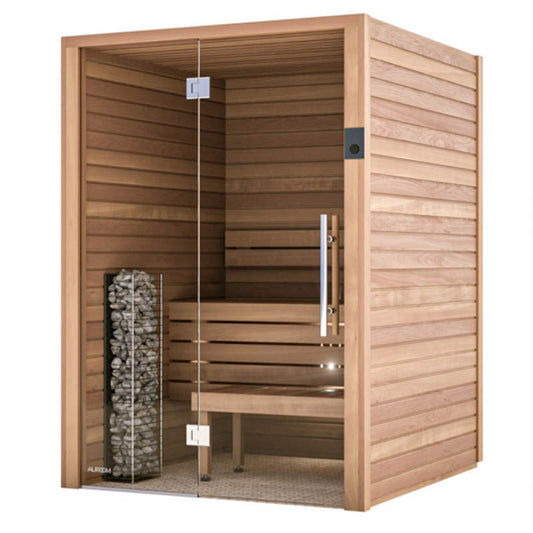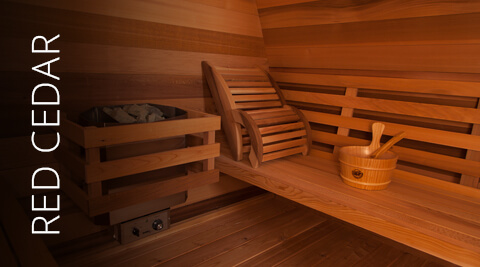Unknown Facts About Traditional Sauna
Unknown Facts About Traditional Sauna
Blog Article
10 Easy Facts About Traditional Sauna Explained
Table of Contents8 Simple Techniques For Traditional SaunaExamine This Report on Traditional SaunaThe smart Trick of Traditional Sauna That Nobody is Talking AboutSome Known Incorrect Statements About Traditional Sauna
Many of the weight shed in a sauna is water loss and is re-gained upon rehydrating. Without a question sauna can be an important part of a healthy weight loss program. To look at the differences between traditional and IR saunas, I will separate these right into proven, theoretical, and produced distinctions.Thus, the hottest factor in the saunawhich is at the ceiling straight over the sauna heateris normally between 185 and 190 F. Traditional Sauna. Claims that a typical sauna exceeds 200 F is merely not real and not appropriate for electrical saunas sold in the US. The temperature level for a far-infrared sauna is typically established between 120 and 140 F; nonetheless, unlike the standard sauna, the objective in and IR space is not to attain a heat
Since of this, the temperature level difference is almost pointless, given that extreme sweating results in both sauna kinds, yet the technique of heating the body is various. In an IR sauna the bather will really feel hot and will sweat profusely, but at a lot lower temperature levels. Therefore, if the objective is to invest longer durations of time in the sauna, the IR sauna is a great choice.

The Greatest Guide To Traditional Sauna
When the high temperature is achieved, the aspects cycle on and off to preserve the heat. Many typical sauna users appreciate putting water over the rocks to produce steam to raise sauna humidity levels. The advantages of pouring water over the rocks include: making the space a lot more comfy, dampening the nasal flows, and permitting the use of aromatherapy by blending vital oils with the water.
In a far-infrared sauna, the warm waves penetrate the body to efficiently heat the body and increase the body core temperature level. To attain this increased temperature level, Far-infrared emitters develop infrared energy which is close to the exact same wavelength as that which the body normally emitsoften described as the "Important Range" of 7 to 14 microns), so the energy is well obtained by the body.
When the energy goes into the body, it causes the body temperature to raise and eventually leads to perspiration. In an infrared sauna it's crucial for the emitters/heaters to stay on practically frequently. Because there is no mass of rocks to preserve warm, the sauna will certainly cool if the emitters shut down.
As mentioned over, the sauna bather in an infrared room wishes to place himself in front of running emitters to get optimal gain from the warmth. The heating time for the 2 spaces can be very various, relying on how the areas are utilized. For a conventional sauna, a bather needs to enable 30-40 minutes for the space to achieve a wanted temperature level and to effectively pre-heat the rocks.
Everything about Traditional Sauna
A well built sauna will generally attain a temperature level of 150-160 F in about 30-40 mins (Traditional Sauna). For hotter click for more temperature levels, the space might need to heat for a longer duration. Once the area achieves established temperature, the heating unit will certainly cycle on and off, generally operating about 50% of the time. The insulated wall surfaces and the warmed rocks will keep the area hot and at stable temperatures.
To some, 15 mins was "lost" while the infrared power heated the timber panels instead of heating a see here now body, while others discover a pre-heated space to be much more comfy and believe an elevated starting temperature level is required to start perspiring. The length of advised usage for each room is roughly the same (10-15 minutes per session); nonetheless, because of the reduced air temperatures and the ability to really feel the results of infrared warm much faster than a standard sauna, it is not unusual for a person to invest a total of 20-30 minutes in an infrared sauna.
Traditional saunas have a tendency to be bigger (therefore use more electrical energy) than infrared saunas, although typical saunas are absolutely available in one and 2 individual sizes too. For a two-person typical sauna, 5x6 or 5x7 dimension is most popular. The top bench can pleasantly seat two or 3 people and is additionally long enough to exist down during the sauna session.


The typical expense per kWH of electricity in the united state is around $0.11, so a 4.5 kW heating system will set you back around $.50 to run for one more helpful hints hour, if the heater runs continually for one hour. Typically a sauna heater will run for 75% of the very first hour and 50% of subsequent hours on considering that the components cycle once the established temperature level is attained.
An Unbiased View of Traditional Sauna
A two person far-infrared room is generally literally smaller than a typical sauna, commonly about 4' x 4' or smaller. The IR heating unit is usually 1.5-1.7 kW making use of a 120 volt 15 amp plug-in service. Considering that the area can be made use of faster than a sauna space, we will certainly presume the area is made use of for to of an hour including warm up time.
Lastly, there is a hardly ever discussed difference in the social experience between both areas. While our culture has actually shed several of the social benefit of the standard sauna experience, it can be very socially satisfying. From family time in the sauna, to heart-felt discussions with considerable others, to sauna partiesthe standard sauna experience can cause intimate interacting socially.
Most greater end infrared rooms consist of tinted light therapy, audio systems and full-glass fronts.
Report this page